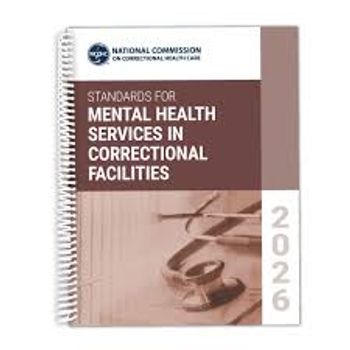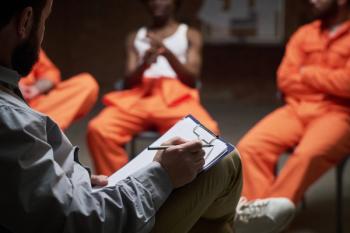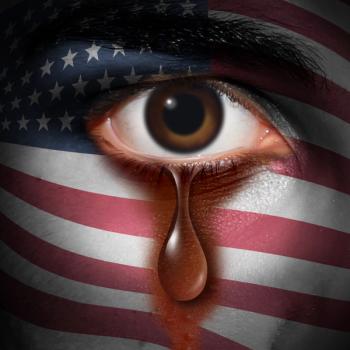
We Should All Be Ashamed
For those suffering from severe mental illness, this is the worst of times. Walk the streets of any city and you will find multitudes of the mentally ill left homeless to fend as best they can for themselves.
For those suffering from severe mental illness, this is the worst of times.
The most dispiriting moments in my entire life have been spent visiting solitary confinement units in state and federal prisons. Many of the inmates have obvious psychiatric symptoms, talking to themselves, screaming and/or pacing agitatedly back and forth; some even smearing excrement all over the walls and on themselves. And walk the streets of any city and you will find multitudes of the mentally ill left homeless to fend as best they can for themselves.
[[{"type":"media","view_mode":"media_crop","fid":"29162","attributes":{"alt":"mental health, prison","class":"media-image","id":"media_crop_487084372665","media_crop_h":"0","media_crop_image_style":"-1","media_crop_instance":"3023","media_crop_rotate":"0","media_crop_scale_h":"0","media_crop_scale_w":"0","media_crop_w":"0","media_crop_x":"0","media_crop_y":"0","style":"width: 137px; height: 193px;","title":" ","typeof":"foaf:Image"}}]]Because of inadequate treatment and housing, the mentally ill are extremely vulnerable to arrest for avoidable nuisance crimes-it is as simple as stealing some food from a store, sleeping on a bench in a public park, or shouting back at voices in the middle of the night. Police have learned that it is a waste of their time to take the person to an emergency room-they will have to hang around for hours after which there is no bed available, no timely outpatient appointment, no housing solution. So their default position has become an arrest-turning someone who should be a patient into a prisoner.
It doesn’t have to be this way and isn’t in other countries with a more developed social conscience and better preserved family units. The tools of effective treatment and decent housing are well known. We just don’t provide them with anything approaching adequate funding. Beyond the shameful inhumanity, this is penny wise and pound foolish. Community treatment and housing are far cheaper than prisons.
Over his long career as researcher, clinician, and ardent advocate,
Let’s start with fifty years ago. In 1964, ‘deinstitutionalization’ was well underway with 12% of state hospital beds having been closed. There were still 255 public psychiatric beds per 100,000 population. Thorazine was widely available and the staffing of the hospitals had improved markedly since the severe shortages during World War II.
Thirteen states had already passed community mental health legislation and outpatient clinics were increasing rapidly. Among the existing 1400 clinics, individuals with psychotic disorders constituted 20% of the patients. Mental health centers such as the Massachusetts Mental Health Center, Fort Logan in Colorado, and San Mateo in California were regarded as models, two years before the first federally funded CMHC would open.
Promising experiments in delivering psychiatric services were underway, such as the Louisville Homecare Project which demonstrated that many individuals with schizophrenia could be cared for at home by visiting public health nurses. Rehabilitation efforts were being led by the Fountain House clubhouse in New York and by programs such as the Fairweather Lodges in California.
In 1964 almost nothing was being written about seriously mentally ill persons among the homeless or in jails and prisons; existing data suggest they constituted less than 5% of both. There had not been a single mass killing associated with a mentally ill person in 15 years, since Howard Unruh had killed 13 in Trenton, New Jersey in 1949.
Fast-forward half a century to 2014. [Ninety-four percent] of state mental hospitals of the beds have since been closed, leaving only 11 beds per 100,000 population. A consensus of experts suggested that 50 beds per 100,000 population is the minimum needed.
And psychiatric outpatient care for individuals with serious mental illness is in very short supply. The federally-funded CMHC program has come and gone, widely regarded as a failure because less than 5% of the patients treated had psychotic disorders. Some progress has been made in establishing best practices, such as the continuity of care under Assertive Community Treatment (ACT) teams and the importance of early treatment, but best practices are not widely available. The treatment system is vastly underfunded and not directed toward best practices.
Multiple studies find that approximately one-third of the homeless population have untreated serious mental illness. A 2010 report estimated there are 650,000 homeless persons in the US, suggesting that approximately 216,000 are seriously mentally ill.
A 2014 study reported that 15% of state prisoners and 20% of jail inmates, which equals 356,000 individuals, are also seriously mentally ill.
The total number of seriously mentally ill individuals who are homeless and incarcerated is thus about 572,000, which is almost the same as the number of state hospital beds that have been closed.
Studies in New York, Indiana, and California suggest that individuals with severe mental illness, mostly untreated, are responsible for 10% of all homicides. And mass killings by untreated mentally ill individuals occur several times each year.
It is thus a remarkable and saddening saga-fifty years of going backward in our treatment of individuals with serious mental illness. Future historians will marvel at it and wonder how we allowed this slide toward barbaric neglect and cruel incarceration.
All of us who participated in mental illness treatment programs over the past half century must share the blame for this situation; indeed, we should all be ashamed. We can plead good intentions in our defense, but good intentions provide little comfort for those who have suffered because of our errors.
Darold Treffert, one of the few American psychiatrists who have tried to reverse the downhill course of psychiatric services in the past half century, described it correctly:
“It is not ‘freedom’ to be wandering the streets, severely mentally ill, deteriorating and getting warmth from a steam grate or food from a garbage can; that’s abandonment. And it is not ‘liberty’ to be in a padded jail cell instead of a hospital, hallucinating and delusional, without treatment because that is all the law will allow.”
Is there any possible way to get this train back on track? First, implementing Tim Murphy’s Helping Families in Mental Health Crisis Act (H.R. 3717) would be a good start. Second, Congress should abolish the IMD (Institution for the Treatment of Mental Disease) exclusion. In fact, I personally believe that the federal government should get out of the mental illness treatment business altogether. They have been in this business since the passage of the CMHC legislation in 1963 and it has been all downhill. Let’s give the responsibility-and the federal money-back to the states and then hold the governors accountable for the results. They cannot do worse than we are doing now.
Third, there needs to be further modification of state involuntary treatment laws and increased use of assisted outpatient treatment (AOT) and conditional release so that the small number of seriously mentally ill individuals who need these kind of services can be treated before they end up homeless or incarcerated. These three steps alone would go a long ways toward improving the treatment system.
Thanks Dr Torrey, for this and for all you are doing and have done to fight for decent treatment and housing for the severely ill. It must be terribly sad and frustrating to devote yourself so wholeheartedly to so righteous a cause and yet not be able to stem the tide of indifference, neglect, and foolish policy.
We can all agree with most of Dr Torrey’s positions, but two have stirred considerable controversy, sometimes because they are inherently controversial, sometimes because he states them so categorically.
The most contentious issues are the value of antipsychotic medication and the occasional necessity of enforced treatment. Dr Torrey’s research and clinical experience has convinced him (as has mine, me) that proper use of medication for acutely psychotic and for recently stabilized individuals is absolutely essential in resolving symptoms and reducing the appreciable risk of relapse. Dr Torrey and I also believe that quite rarely the coercive risks of applying external constraints to ensure needed medication far outweigh the much greater coercive risks that come when untamed psychosis leads to prison and/or homelessness.
Opposition to Dr Torrey comes most heatedly from those who have had a personal experience of “surviving” psychiatric illness, despite what they believed to be a detrimental, coercive psychiatric treatment. Some in this camp categorically oppose all medication and all constraint-believing instead in the universal applicability of recovery models, empowerment, and peer support.
The seemingly large chasm between these opposing views largely results from the fact that one size cannot possibly fit all. The most enthusiastic supporters of the recovery approach are the people for whom it was optimal and they are entirely right in believing it is the best approach for them. But that doesn’t mean it is safe or optimal for others who have more acute, severe, endangering, pervasive, and impairing symptoms which puts them at risk for prison, homelessness, chronicity and a terrible outcome if treatment is not promptly offered.
It is crucial to find a middle ground that will allow joint advocacy and caring for those most in need. This has been possible with
A future blog will hopefully find where there are points of agreement between Dr Torrey and the Recovery Model. Indeed we should all feel ashamed of the current sorry state of affairs and work together to improve them.
Newsletter
Receive trusted psychiatric news, expert analysis, and clinical insights — subscribe today to support your practice and your patients.

















